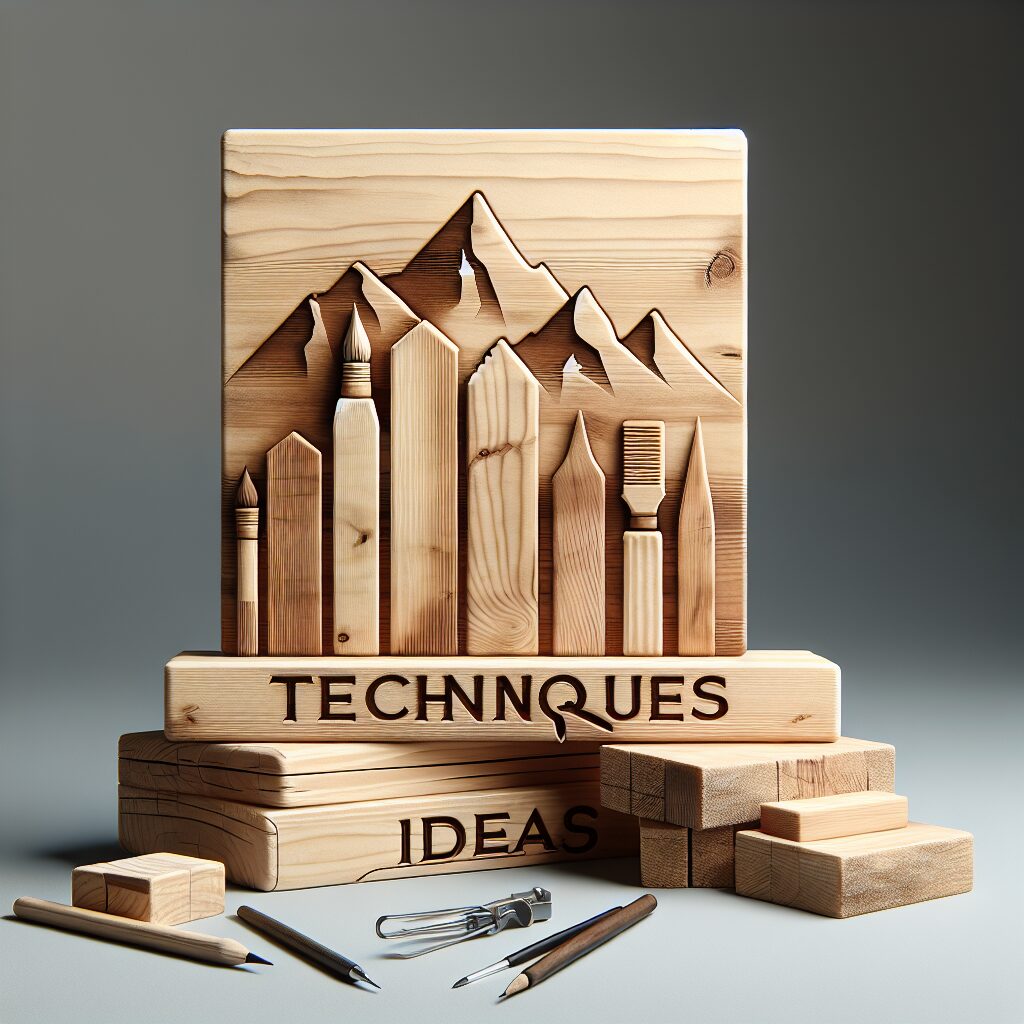Acquiring Basic Chip Carving Know-How
Chip carving—a woodworking technique steeped in rich history—is an ideal pick for both beginners setting up a workspace and seasoned artisans alike. It equates to employing a specialized knife to remove chips of wood, crafting exquisite designs into a flat surface, typically wood. This captivating art form is an outstanding starting point for newcomers embarking on woodworking journeys. Herein, we delve into the fascinating world of chip carving, exploring its intriguing patterns, techniques, and the notable influence different tree species can have on your woodworking project.
The first step to master any craft is understanding the basics, and the art of chip carving is no different. The essential tools needed, apart from your steady hands and keen eyes, are a chip carving knife and the wood itself. A Japanese woodworking knife is viewed as an excellent chip carving implement, noted for its precision and quality.
Despite the simplicity of tools used in chip carving, carving out perfection is no small feat. It requires understanding different wood types, for instance, the differences between hardwood and softwood can significantly impact the carving process. Grasping the concept of wood grain and making good use of this knowledge can mean the difference between an average and a sculpted masterpiece.
Defined by Design: Immersing into Patterns
Woodworking Design Software can help in honing your design skills, aiding you in visualizing and crafting intricate patterns. The world of chip carving is laden with an assortment of designs, ranging from geometric and abstract patterns to more freeform, flowing designs.
Geometric chip carving features designs with precise lines and angles, mainly using triangular cuts. This style can be traced back to the furniture and churches of Medieval Europe, renowned for their love of symmetry and order. Abstract patterns, however, paved the way for artisans to think outside the box, experimenting with asymmetry, intersecting lines, and various shapes to craft unique designs.
When starting, you may lean towards simple geometric designs. However, don’t shy away from experimenting as you gain confidence. And given the inexpensive nature of the materials, it makes for the perfect budget-friendly woodworking project.
Cultivated Carving: Easy-to-Follow Techniques
To start carving, first, sketch the design lightly onto your chosen wood piece. Recalling the woodworking sketching techniques, follow your pattern with the knife’s tip to trace the design, removing wood chips with the blade. It might seem mundane, but you’ll soon learn the rhythm of the tool, progressing in precision and speed.
With chip carving, it is crucial to remember that patience, perseverance, and careful handling are the keys. The acquisition of these can often be as therapeutic as the finished art piece. For beginners, it is recommended to read up about the common beginner errors and ways to avoid them.
Elevating these techniques, mastering traditional hand tool techniques might take some time, practice, and a whole lot of patience, but it’s worth the effort. The reward is a uniquely stunning sculpted piece, imbued with your creativity and hard work—alone worth the exercise.
The Cherry on Top: Finishing your Carved Piece
The finishing process of your carved piece should not be taken lightly as it can accentuate your design, giving it depth and dimension. The importance of finishing fundamentals—surface prep, stains/varnishes, application methods—cannot be overstated. These aspects are just as crucial as the carving skill itself.
Darker stains can settle into the carved crevices, highlighting the pattern against the lighter surface of the wood. An added benefit to you as an artisan will be your experience, naturally developing a diverse range of skills that will flow into all your future wood crafting.
From crafting rustic furniture, artistic inlays to wooden jewelry-above all, chip carving serves as a gateway into the magnificent world of woodworking. It is an art form that can pave the way for developing varied woodworking skills, offering an affordable yet profoundly satisfying endeavor that will keep you engaged and constantly learning.
Carving Your Path in Woodworking
Woodworking is an amalgam of different techniques, designs, and patterns, each requiring its unique skill set and approach. Chip carving serves as a fantastic entry into this enthralling world, opening endless opportunities and proving that sophisticated and charming craftsmanship is achievable using the simplest of tools.
From the quaintness of utilitarian wooden structures to the elegance of the master-crafted carving, woodworking embraces everyone warmly, regardless of skill level. Easy starting projects such as chip carving are an invitation, an avenue to explore and cultivate one’s creative side. So why wait? Carve out a niche for yourself in the manifold universe of woodworking—you’ll discover it is indeed a journey worth undertaking.







